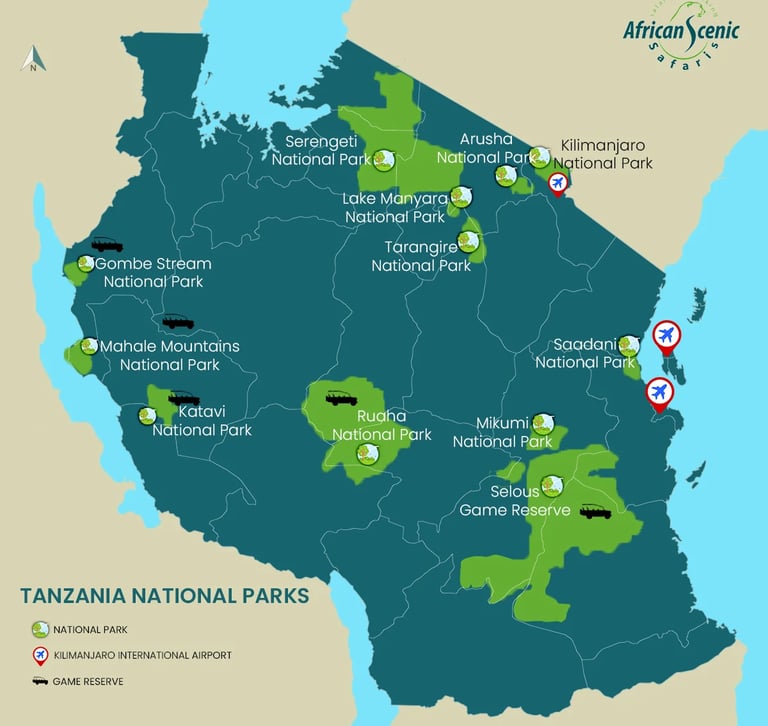Tanzania's Nationalparks
Tanzania is known for its biodiversity and national parks. The Tanzania National Parks Authority (TANAPA) manages 23 parks, covering about 15% of the land, crucial for wildlife conservation and tourism.
Northern Parks
Serengeti National Park: Famous for the Great Migration of wildebeests and zebras.
Ngorongoro Crater: Known for its dense wildlife population including the Big Five.
Tarangire National Park: Known for elephant herds and baobab trees.
Lake Manyara National Park: Famous for tree-climbing lions.
Arusha National Park: Offers diverse landscapes.
Southern Parks
Nyerere National Park (Selous): Less frequented by tourists.
Ruaha National Park: Significant for its elephant populations.
Mikumi National Park: Accessible from Dar es Salaam.
Western Parks
Gombe Stream National Park: Known for its chimpanzee population.
Mahale Mountains National Park: Renowned for its scenery and chimpanzee trekking.
Katavi National Park: Known for large hippo populations.


